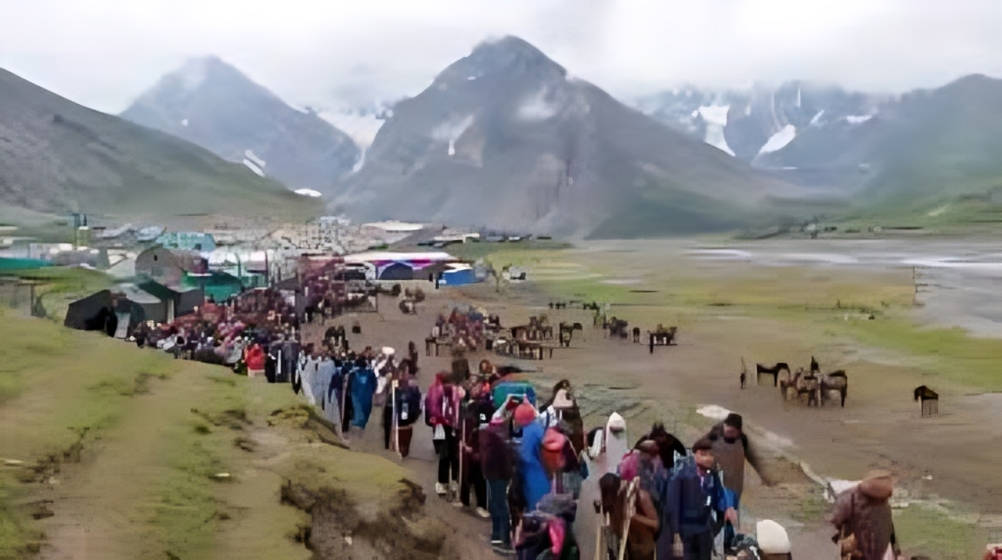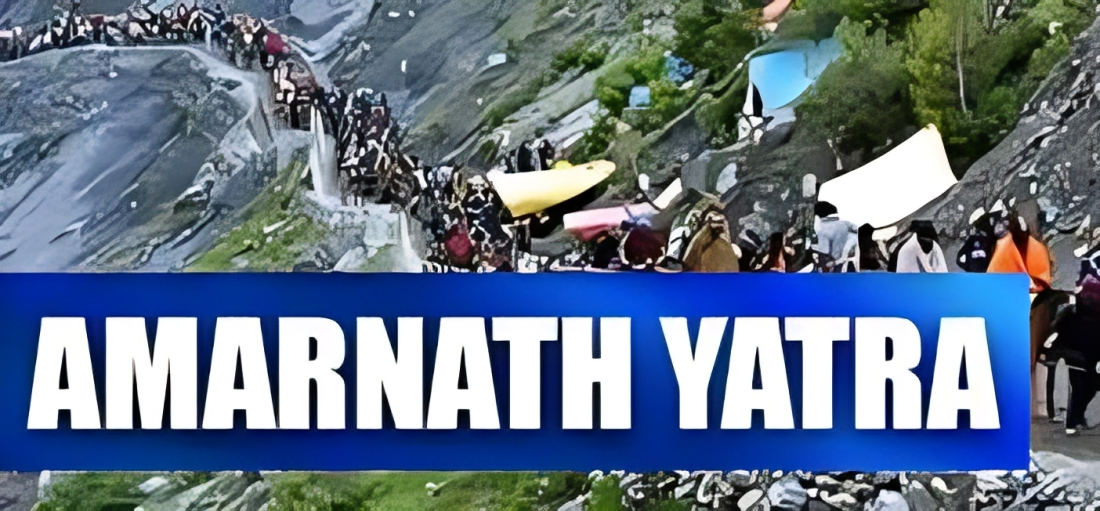As preparations intensify for the annual Amarnath Yatra 2025, the Jammu and Kashmir government has officially declared the entire pilgrimage route as a ‘No Flying Zone’. This step comes amid heightened security concerns, especially in the aftermath of the Pilgrimage terror attack in April, which claimed 26 lives.
According to a formal order by the Jammu & Kashmir Home Department dated June 16, 2025, these stringent measures are aimed at ensuring the safe, smooth, and peaceful conduct of the upcoming pilgrimage, which is scheduled from July 3 to August 8, 2025.
Why Amarnath Yatra Routes Declared ‘No Flying Zone’?
The Ministry of Home Affairs (MHA) has advised the J&K administration to declare the entire Amarnath Yatra route as a ‘No Flying Zone’ from July 1 to August 10, 2025.
This restriction applies to all kinds of aviation platforms, including:
- UAVs (Unmanned Aerial Vehicles)
- Drones
- Helium balloons
- Paragliders or similar aerial devices
➤ Exceptions to the Ban:
- Medical evacuations
- Disaster management operations
- Security forces’ surveillance
A detailed Standard Operating Procedure (SOP) will soon be issued to specify guidelines for these exceptions.

Amarnath Yatra Routes & Duration
The Amarnath Yatra has traditionally been undertaken via two main routes:
- Pahalgam Route (Traditional Route)
- Longer, scenic, and historically significant.
- Baltal Route (Shorter Route)
- Preferred by those who want a faster journey.
This year, for the first time, the pilgrimage duration has been reduced to 38 days, down from earlier 60 days. The decision was made to strike a balance between managing logistics, security, and accommodating the large influx of devotees.
Security Arrangements for Amarnath Yatra 2025
With the security threat heightened post the Pahalgam terror attack, unprecedented security arrangements have been made for Amarnath Yatra 2025.
➤ Deployment Highlights:
- 581 companies from Central Armed Police Forces (CAPFs) including CRPF, BSF, and ITBP will be deployed across key points.
- Road Opening Parties (ROPs): These teams will regularly sanitize and clear the pilgrimage routes before movement.
- Quick Action Teams (QATs): Ready to respond to any security emergency on the spot.
- Bomb Disposal Squads (BDS): Active along the route to detect and neutralize explosives.
- K9 Units (Sniffer Dogs): Specially trained dogs for identifying explosives and narcotics.
- Drone Surveillance: Multiple drones will provide 24×7 aerial surveillance over sensitive spots.
- Signal Jammers: For the first time, high-frequency jammers will be installed along the convoy routes to prevent remote-controlled explosive triggers.
Special Measures for Convoy Security
During the daily Amarnath Yatra convoy movement, all adjoining roads and National Highways will be temporarily blocked. This measure prevents unauthorized vehicles from intercepting the convoy and minimizes threats of possible attacks.
These enhanced measures underline the government’s focus on pilgrim safety, especially after recent attacks targeting civilians and security forces in the region.
Why Such Heavy Security for Amarnath Yatra?
The annual Amarnath Yatra is not only a religious pilgrimage but also a symbol of national unity and faith. However, over the years, it has also been targeted by terror outfits aiming to disrupt communal harmony.
The April 22 Pahalgam attack, which tragically killed 26 people, has served as a grave reminder of the persistent threat posed by militants to peace and civilian life in Jammu and Kashmir.
By implementing a No Flying Zone and deploying comprehensive security setups, the government hopes to provide both psychological reassurance to pilgrims and operational readiness for the security forces.

